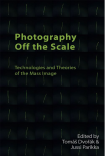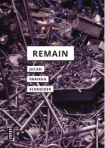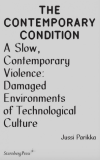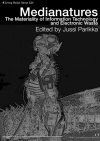Turf instead of Turf Wars
I was recently invited to deliver the annual keynote lecture for the graduates of Amsterdam University New Media Studies MA cohort. Below is the talk (August 29, 2012) that I did – sorry for the length of this post, but might interest some.
Turf Instead of Turf Wars:
The Future of Media Theory (as Bin Theory)
I was asked to talk about the Future of Media Theory – but I have to admit, talking about the future of anything has never been one of my strengths. Trained as a historian, a cultural historian to be accurate, one of my fortes was to engage with the past. Surrounded by other PhD students and colleagues who were doing research on Antique Greece, Early Modern Cultures, or for instance Victorian travel writing, I was often in a mixed peer group when trying to figure my head around historical aspects of new media culture. There seemed to be something comforting thinking that the old was always at some point new (as a reference to Carolyn Marvin’s pioneering research from the 1980s). However that sort of escape route proved early on to be an asset: I sort of consoled myself that at least, this way, I do not have to worry about keeping up; the hyperbolic pace of media cultural discourse, of shifts, moving forward, sideways, changing its object of desire from one gadget to another, screen innovation to next, network buzz word to the next buzz, theory to another turn – all of this could be, perhaps, bypassed the other way; what was the new of the past, or the novelty that again feels fresh – something that a brand of theorists call media archaeology. Or, if you prefer, call it bin theory; about things discarded, waste(d), sometimes yuckily stuck together so as to lose their individual contours, and where digging in the dumpster will get your hands dirty. Digging in the ruins to discover new things. Not just being behind of the curve, but actually turned back to look at the previous alley, probably its dumpster, for something slightly more curious of an example than the emergence of the new – to paraphrase one Finnish scholar (Mika Pantzar), there is nothing more worn out than the continuous talk of the new.
I want to talk about one of the benefits of media theory as part of media studies – of theoretical absurdities that make sense; and sense-making that should be at times discarded; this approach relates to the speculative power of such an interdisciplinary field and its way to tackle with much more than media, or perhaps other formulation would be “not-just-media”. Let me get back to that formulation soon, but before that, just open up the agenda a bit more; so what if, instead of the normal media studies check list that gives you a nice, predictable list of “media” from television to other screens, from network media to more specifically software, games, and so forth – what if instead, you start to look at media in all sorts of weird places?
Indeed, people in media studies, for instance the prestigious Bernhard Siegert in Germany, have approached things like doors and ships as media of sorts. Consider it for a while: what is a door if not a mediating factor between insides and outsides, a basic anthropological element that divides spaces and as such, stands at the beginning of any power relation; how thresholds are controlled in terms of access, people, goods, traffic of various sorts? All these sound like questions an analyst of network culture might ask but we can transpose the question to such archaic thresholds too. Indeed, as Siegert reminds us, there are a lot of non-humans involved too. Of course, there are very human cultural techniques concerning doors, like how loud or quietly you are trained and educated to shut it and yet the materiality of the door (which as we know, can come in many guises from household doors to gates to automatic doors, sliding doors, to those logic gates you find inside computers…) is what itself plays a role as an agency.
Besides doors, we could consider, as does Siegert and other scholars engaged in analysis of cultural techniques, maps, diagrams, graphs, practices such as servantry (see Markus Krajewski’s work) and more as ways to open up the media studies checklist – media studies becomes more than just media, not just media, as a way to understand a range of technologies, gestures, practices and techniques which consolidate a range of things under the umbrella of what we blandly call media. Such are part of the necessary gestures of extending the boundaries of what we do, just for the sake of getting away of the stuffy indoors and knocking on the doors of other disciplinary huts; don’t always even knock and be pollite but poach and steal, smuggle and translate, transform – a range of pirate practices for theory production too, which constitute what a bit tiredly is often called interdiscplinarity. For what is media studies already from the outset if not interdisciplinary? It deals with themes familiar from science and engineering, of cultural studies and anthropology, of social sciences and, if you want to push your boundaries, mathematics too – for some theorists, including Wolfgang Ernst, it is with mathematics that our specific understanding of technical media should start. From Pythagoras to time-critical processes of current computers, mathematics opens a whole media epistemology.
For sure, media is definitely not only about mediating or communicating. We need to stir up things with theory, and theory itself has a peculiar place in contemporary academia. While an increasing amount of for instance institutions try to purge theory out from their media studies courses in order to gain street cred in terms of vocational skills deemed necessary for the digital economy (such a British buzz word), the other side of the coin in our field of arts and humanities and philosophy is the lust for glamour of theory. Theoretical turns and trendification of even metaphysical speak is an index of both looming turf wars as well as theory as a brand; in the current attempts to neoliberalise universities, theory becomes work of heroes (and still, slightly less often heroines), often described in the language of war; wars on social media from Twitter and blogs as platforms much quicker than in the age of David Hume and Jean Jacques Rousseu, the quarrelling philosophers of the 18th century – for them, the media of turf wars were letters. In wars, and neoliberalist managerial wet fantasies, theory becomes performed as slick and without hiccups. Theory becomes confused with Ted –talks and the theorist as a brand, smooth and convincing salesperson, demonstrating also the powers of performance (see Paolo Virno on these points) on stage that one demands both as a visual culture phenomena but also increasingly in terms of scholarship as customer service as in the UK.
But there are more acute reasons for our expansion of media theory than just for the sake of avoiding stuffy academic air. What interests me in this case are not turf wars, but more closely turf itself, as well as things below the turf; we can use theory as a pathway itself to open up and question lists of things, as well as old habits, and include a range of new things for our conceptualisations. There is a practice of theory as well. In relation to my bigger theme today, the past years have seen a whole media zoology (and Zootechnics, see Vehlken’s recent book) emerge, with animals and animal studies finding a joint tune with some media studies theories; similarly things ecological, even under another theoretical theme of past years, media ecology, are mapped as part of the very concrete material contexts in which media takes place and displace. Rubbish, electronic waste, and the concretely ecological contexts of media are what constitute another way of seeing where things come from and end up – and using seemingly insignificant themes to track and map what is the more abstract and still yet one of widespread effects. Such media cartography is one way to see that task of a much more world oriented, and even object-oriented route for some. This also might be an arena for bin theory – clearly a relative of what McKenzie Wark calls P(OO): Praxis (object oriented): “A praxis which knows itself to be limited, but which constructs a praxis of praxis, aimed at a useful knowledge of the strange praxis of objects entertain amongst themselves. And to make it possible, a certain conversation. One which does not have a stake in the language-game of professional philosophy, but which raids it for the odd useful thing, for hammers and such.” (Wark 2012: 161)
As cartography, let us remind ourselves that the map is the territory (to refer to Bernhard Siegert’s text in Radical Philosophy in 2011). Such a mapping that has to mistake the object as part of the praxis is not content to come up with representative lists of media studies topics, but wants itself to participate as an agent in social discussions – a technology of mapping that as technique caters objects, things and more to be even recognized as such. It steps from metaphysics to practices, historically existing. This is, as mentioned above, the thing about not-just-media, which is a variant of the media scholar Matthew Fuller’s (2003) phrase “not-just-art”. Without going into more details, Fuller’s note in the context of software points towards “a poetics of the potential” and how a piece of software – and/or art – can elaborate a range of other critical techniques that are not just critique; not just a deconstruction of the notion of art into ironic twists of anti-art, but ways to forge, create worlds, and modalities of experience. For us, not just media, or not just media theory is a way to call into focus the fact that we just don’t talk of media, and we just don’t do media to theorise, but to action things – to enact. Theory actually does a lot, through it’s work of concepts.
But in terms of speculations and not-just-typical media theory, let me explain more about what I mean with turf, with animal approaches, as well as the emphasis on junk as well as energy – all things quite physical, and definitely not purely semiotic. To start with animals, a for purpose simplifying claim gets us on the pitch; that so much of media theory has been branded by a focus on the human; as an analysis of human communication, we have tended to focus on linguistic models and a variety of social and interpersonal themes, or as an analysis of worlds of perception, to see media as extensions of Man. The Marshall McLuhan phrase however is not very satisfactory if you start to realise the amount of very non-human aspects when it comes down to media environments that are by definition so quick and so puzzling even on a physical level that it would not merit them well to call them an extension of myself. Indeed, the recent years have seen various well grounded and even provocative attacks against a human centered humanities.
As for media of the other sort, namely of animal worlds, there are obvious routes as well. One could now claim this territory to for instance biomedia: the biological as something that is taken to support what usually would call high tech processes; besides metaphors, the harnessing of for instance magnetic bacteria to become grown harddrives is under way, as are other plans that try to fit (and/or modify) the historically quite recent ideas of computer architectures as part biological and ecological affordances.
But other sorts of animal worlds are involved too. Hence, take science fiction as a way to understand what I am to try to get with, in terms of this mild zoophilia. If you want to be futuristic, you do not anymore fantasize in reference to humans or even androids, but animals, and preferably insects (as I tried to argue in Insect Media too). This is the lesson one gets even from a glimpse of past years of science-fiction discourse, such as Ian McDonald’s Dervish House. The nanotechnological future Istanbul is pitched as the 21st century version of the Silk Road node, defined by its booming nanotech cluster of businesses and tech companies. The David Cronenberg 1980s fantasies of human-insect –hybrid (as in the Fly) is superseded by the fiction version of spider robotics and insectoid-drones part of security and surveillance regimes in Istanbul plagued by various suicide sects.
Animals abound in media talk too, as well as to refer to trends in current digital society. Swarms and more, such terms as pollen society float about (a term by Yann Moulier Boutang)– here to refer to the specific collaborative and cognitive modes of value production in current creative industries culture.
There is a bit of a similar thrust to be noticed in how marketing researchers are trying to convince that we need to look at the reptilian brain, the unconscious and unrational parts, in order to find what triggers us to brands; social networks bloat with links about news stories in which insect research demonstrates how ants do it, termites do it, even Facebook does it: clusters around common interests, sharing, collaboration — a nice way of trying to convince that companies from Silicon Valley with their own specific quite cunning business models that aim to accumulate social behaviour as an inroad to capital accumulation are as natural as hive formations. More recently, this has taken place by talk of Anternets even, an idea that certain ants’ foraging patterns are like the invention of TCP/IP protocol but some millions years earlier.
Such examples demonstrate a scientific keenness in media, animals and behaviour as somehow interlinked, a weird rhetorical connection established through scientific research that seems to link up evolutionary aspects of animals to specific technological platforms. Don’t get me wrong – I do like animals, at least some, and I am an active Twitter user, and it is for sure that most of my actions happen on a very non-rational level of my own lizard brain – but what this more specifically points out is a terribly weird new version of sociobiologism, but on the level of animal behaviour and modes of organisation. Indeed, there is an interesting relation to the sociological interest in crowd behaviour in cities at the end of the 19th century and early 20th, and our current forms of crowds online – both demonstrating for researchers patterns of such behaviour that seem of the lower level; It begs the question concerning the “social” in social media, and the wider pitching of sociability as the natural protocol of the world. Instead, we should shout out that there is nothing natural about sociability, not at least in this articulation of corporate platforms as so inherently connected to biology and evolution! Instead, we need to pick open such creations, imaginations of the social, inventions of forms of life that take detours at times through the natural.
As a cultural historical theme, we can talk of the dual bind of modern urban technological landscapes and animals: disappearance of farm animals, rodents and so forth is paralleled by the animalisation of media, which seems to be clear from even a cursory representational analysis of early media, so fascinated by agility of animal bodies as well as animation worlds of rodents and animal farms – a whole media zoology (see Akira Mizuta Lippit’s Electric Animal on this topic). This idea of media zoology used in a parallel sense to that of a “zootechnical” approach (Vehlken) to elaborate the wider entanglement of communication practices in relation to animal research – and in addition, as we will see below, to a wider media ecological stance.
But of course there is more to this grounding of media zoology than looking at media through its content and what is on the screen. Indeed, the worlds of such fiction as The Dervish House remind that media as technologies – as abstract, yet embodied, as concrete but massively distributed in the current wireless network age – work much more efficiently when they are not modelled on the human form. This is why marine biologists turned US military and security advisors, talking about octopus tentacles make international news: this refers to the University of Arizona marine ecologist Rafe Sagarin advising on learning about decentralised organisational methods from the tentacled marine creatures. “What the Octopus Can Teach Us About National Security”, ran the BBC headline which we can tweak to: “What the Discourse About the Octopus and National Security Can Teach Us Media Theorists”.
In terms of media theory, such voices relate to necessary complements to the traditions of theory of technology from Ernst Kapp to Marshall McLuhan. There are predecessors, and is a whole another tradition of media theory taking aboard animals in various forms, and starting the theoretisation of media from a different set of affordances (Insect Media). Indeed, when talking of media ecology, one should not forget the early writings of Harold Innis, which features such literally ecological themes as rivers, fur and , yes, beavers as well as the more conceptual reminders that medium did not always refer to what you think it does on a media studies course.
Besides quirky examples about beavers and protocols, ants and Ivy league scholars, we can point towards a gloomy side of this development as well. So allow me the role of a doomsday narrator in terms of ecological effects of media technologies. This itself is not that difficult, acknowledging the amount of electronic waste we discard every year – millions, hundreds of millions of electronic devices that are still operational, and besides that, packed with a range of hazardous material. Media are, by definition and in their material constitution, toxic. This is not a gloomy statement of the sort that media content ecologists like Neil Postman voiced while opening his telly – that it is ruining our world, our social relations, and amuses us to death (incidentally, I always liked more the ex Pink Floyd member Roger Waters’ version of this theme); instead, it is the material existence of media that is directly hazardous to our bodies. Instead of semiotics of media, we approach materialities of media, to be understood for instance through a “mineral per disease syndrome” chart:
Lead — damage to the central and peripheral nervous systems, blood systems, kidney and reproductive system.
Cadmium –— accumulates for instance in the kidney
Mercury — brain and kidneys, as well as the fetus.
Hexavalent Chromium/Chromium VI — passes through cell membranes, producing various toxic effects in contaminated cells.
Barium — brain swelling, muscle weakness, damage to the heart, liver, and spleen. (Source: Exporting Harm, )
Such are only a couple of examples of things that constitute our information technology, a wide range of examples of refined minerals, metals, and chemicals that are essential as ever so material things inside our media, which paradoxically has meant neglecting them as any part of the courses concerned with Understanding Media . With a way too serious eye have we tried to approach media only as media, and ignored the much lower, physical level on which media takes place. (For alternatives, see for instance Sean Cubitt in Grau 2011).
Those underpaid workers, in non-Western locations, dismantling the media devices for the valuable parts, are the ones exposed to the above-mentioned list of health hazards. (As always, see the wonderful Digital Rubbish by Jennifer Gabrys) Methods as crude as riverside dumping, burning old computer parts, and so forth are also part of the life – and death – cycle of our digital culture, as methods of displacing obsolescent products as well as retrieving what they were made: copper, gold, and so forth. Of course, this is the part of the cycle we rarely see, as such media practices are reserved for developing countries, as end placement for stuff we don’t want to view, listen or play anymore. Junk media does not stop being media, and similarly if we speculate about futures of media theory, we need to quite concretely speculate futures of our media devices – where do they end up, quite physically, as part of container shipments, logistics routes, and a grey economy of the zombie life of media devices. (On logistics, see for instance Ned Rossiter’s work.).
With such speculation, we rediscover a materiality of the mediatic. This extends to what I would call a material speculative take on media history. Think of it this way:
Media history is one big “story” of experimenting with different materials from glass plates to chemicals, from selenium to coltan, from dilute suphuric acid to shellac silk and classic insulation material from gutta percha trees essential for underwater cables, to processes such as crystallization, ionization, and so forth. They also are media practices. Our screen technologies, cables, networks, technical means of seeing and hearing are partly results of meticulous – and sometimes just purely accidental – experimentation with how materials work; what works, what doesn’t, whether you are talking of materials for insulation, conduction, projection or recording. Same thing with processing and its materiality.
The transistor based information tech culture would not be thinkable without the various meticulous insights into the material characteristics and differences between germanium and silicon – or the energetic regimes; whether that involves the consideration of current clouds (as in server farms), or the constant attempts to manage power consumption.
What such geeky historical mapping reveals is just part of a bigger story that demands even more urgent attention in the age of the high energy consumption age of server farms and cloud computing (Cubitt, Hassan and Volkmer 2011): that story is not about frictionless clouds and sweetly mobile technologies with an ideal sense of displacement; this story is more about physics, and entropy, and exhausted resources;
Media and information technology are far from zero entropy mathematical dreams, and embedded in physical networks, afforded by hardware and hardwork – practices of mining, shipping, polishing, constructing, and then the other way round, when disgorging such machines.
This is the mirror side of the question about resources on governmental levels, also multinational governmental levels; Whereas on EU policy level, directives about electronic waste have focused on collecting and appropriate treatment, in terms of economic planning for the information technology age, there is a different challenge to face
From the European Union perspective, the future of information technology has to be planned below the turf: EU does not hold much in terms of critical raw material resources when it comes to advanced technology that are identified crucial for a longer term socio-economic change, something identified to have geopolitical-economic consequences. In short, this refers to the crucial status of China, Russia, Brazil, Congo and for instance South-Africa as producers of raw materials, and an alternative material future of technological culture. Suddenly, it is realized how the materiality of information technology starts from the soil, and underground – 500 meters, and preferably (for the mining companies) lower as the earth’s crust is dozens of kilometres deep.
Cobalt Lithium-ion batteries, synthetic fuels
Gallium Thin layer photovoltaics, IC, WLED
Indium Displays, thin layer photovoltaics
Tantalum Micro capacitors, medical technology
Antimony ATO, micro capacitors
Germanium Fibre optic cable, IR optical technologies
Platinum (PGM) Fuel cells, catalysts
Palladium (PGM) Catalysts, seawater desalination
Niobium Micro capacitors, ferroalloys
Neodymium Permanent magnets, laser technology (source)
Such an underground is slightly different from the discourse of underground art or activism.
Siegfried Zielinski, the Berlin situated media variantologist, writes about “deep time of the media” referring to extensively long historical durations for media inquiry; of looking at Antique times, of medieval alchemists, of 19th century science-art collaborations as such deep times of media practice. But what if we need to account for an alternative deep time, that reaches for this depth of even kilometres down the earth? This extends the historical interest into alchemists towards contemporary mining practices, minerals and a different sort of wizardry than those of celebrated geniuses of steve jobses. Instead, would this sort of an approach be something that is comfortable to tackle with materiality on its below the ground level (such theory is definitely “low theory”, to refer to McKenzie Wark’s notion), stretched between political economy of resources and for instance art practices: I am here thinking such examples as Florian Dombois’ “Auditory Seismology” work that sonifies earthquakes – usually of a frequency range that does not reach the human ear, but that can be modified, instead of the usual visualisation. Digging into the earth is a methodology that lets us look at what affords our media, and theorise such regimes of perception, of sensation that are immediately catered for us. For instance sonification of such earth sounds one can justify from a point Dombois also makes, that is how the “the eye is good for recognizing structure, surface and steadiness, whereas the ear is good for recognizing time, continuum, remembrance and expectation.”
The ear as a media theorist (an idea embraced by Wolfgang Ernst as well) is more suited to theoretical analysis of temporalities, for instance. Temporalities of deep earth. Despite my historical training, I am more convinced that these are the temporalities we should be looking at and listening to.
A lot of what I have been talking about boils down to the following themes, in the mode of ecological mapping an alternative, more “natural” list of media studies.
More accurately than a call for naturalisation, it is a list that acknowledges the various sedimentations, geologies and garbologies of media that we need to account for: worlds of animal energies, also in terms of their exploitation, whether just through bad use of ideas from biological and ethological studies, or directly through the linkages of animal testing with consumer industries;
Through minerals, as a resource for that physical, hard layer of information technology that gets too often press only as creative industries and digital economy of networks;
And then energy; not just the exploitation of human energies as with cheap physical labour or the exhausted creative industries freelancers, but also energy production – of which a big part still unrenewable.
Such aspects of media theory – of animals, rubbish, energy is not just to talk rubbish, but to continue the earlier idea; of our field of not just as media theory. We nod towards the bin, and bin theory. Instead, to an extent that some media theorists claim that the whole term is becoming useless because of its ubiquity, we can see the rapidly infecting impact of things mediatic. This is not a closed list, just like speculative media theory should not stop at the definitions handed down to you in some classical textbooks. Instead, the speculative enterprise, nowadays consolidated also in such waves of philosophical inquiry as speculative realism, is one of not really knowing what to expect; for speculative realism, it corresponds to an ontological attitude about the non-human constitution of the world – that there is much more than we expect in terms of our epistemological categories. And yet, we speculate in so many ways – even the term has been corrupted by financial capitalism adapting it as one of its techniques that presents its own version of future-orientedness;
We need to grab speculation back, as an inquiry into things more than is the assumed, or more than is expected, so that we can really dig down to something deeper than turf wars of theory. Turf is already enough to start theorising, as a way to go deeper, (be)low theory, and towards the crust.


















Thanks for this, a great variety of interleaved topics. On these grounds (literally), I suggest you to check out the movie Onkalo. On a trivial level it is about a particular project for radioactive waste deposit, but different readings of the movie are possible. Here’s my reading of it when i first saw it.
Hi/moi! Will look at this link soon – it looks really promising. Thanks for flagging this and the film. I’ve scene Onkalo, and it is a good example of the shift of discourses – even practices – of cultural heritage from its traditional institutions to issues relating to ecology, even geology.(I’ve btw. got a paper coming out where I briefly mention Onkalo).